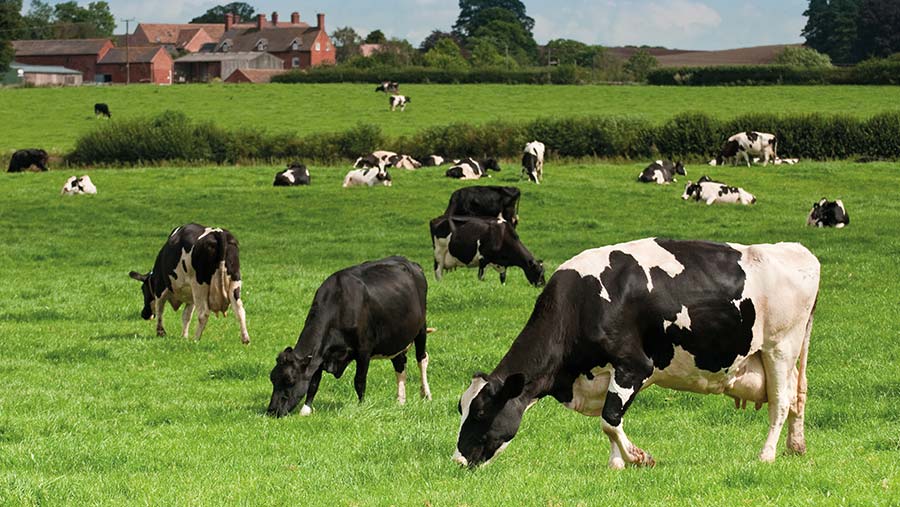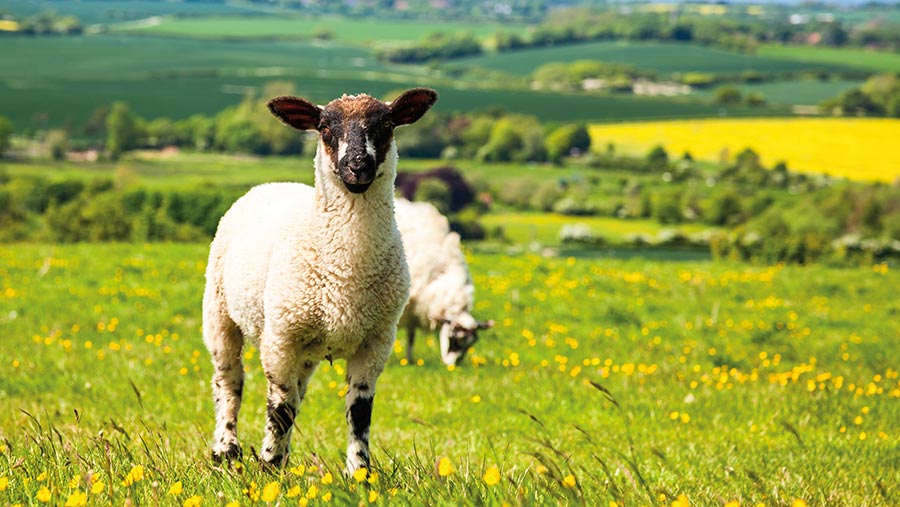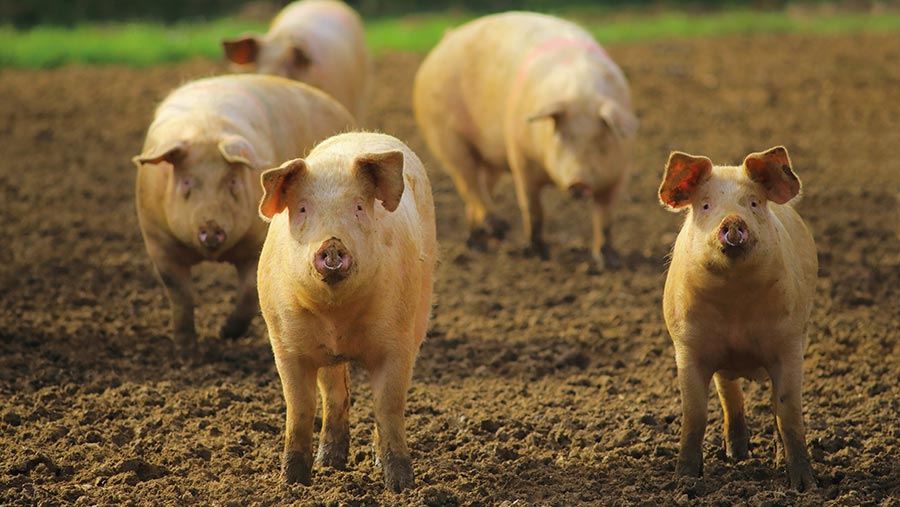AHDB sector reports set out five-year spending priorities
With the AHDB’s four sector councils issuing their five-year plans and spending priorities this week, we present a snapshot of how the levy board intends to “deliver the future of farming”.
See also: Future of AHDB levy spending – what two farmers think

© Springfield Gallery/Adobe Stock
AHDB Dairy
With a remit to tighten its focus and respond to the preferences of its 8,000 levy payers, the dairy sector council has identified three key themes:
- Promoting our reputation
- Data and evidence to underpin our reputation
- Practical support for farmers.
“Levy payers gave us a clear message about the high importance of post-farmgate work, such as marketing campaigns, reputational defence, consumer education and exports,” says the report. “There was also strong support for areas such as animal health and welfare, environment, dairy genetics and genomics.”
Specifically, the plans include measures that:
- Deliver consumer marketing campaigns that encourage dairy consumption
- Robustly challenge misinformation about dairy in the media
- Work with government and industry to drive exports
- Track the use of antibiotics in the sector
- Help combat diseases such as Johne’s which can damage dairy’s reputation
- Develop the UK Dairy Roadmap to reduce the sector’s environmental impact
- Use Knowledge Exchange to make farmers more profitable and sustainable
- Provide market intelligence, such as margin analysis.
What it will do less of:
- New work on bovine viral diarrhoea, mastitis and the Colostrum is Gold campaign will cease, as will benchmarking.
AHDB Cereals and Oilseeds

© Tim Scrivener
The cereals and oilseeds sector aims to become more focused beyond the farm gate. Again, there are three key themes:
- Trusted variety and product testing
- Research and market intelligence
- Work across the supply chain.
“Levy payers told us two important things – that almost all aspects of our work are valuable, and that the effectiveness must be improved,” says sector chairman Stephen Briggs. “But if levy payers wish to continue to receive the current services, then we will need to increase the levy in the future.”
Specifically, the plan includes measures that:
- Keep the Recommended Lists up to date and seek to improve them
- Improve fungicide performance research, and trial other products such as micronutrients and biostimulants
- Identify ways of countering rising input costs, such as better soil management and improving integrated pest management
- Continue to provide market intelligence, including carbon and biodiversity markets
- Maintain the system of Strategic Farms, Monitor Farms and Arable Business Groups.
What it will do less of:
- Work in the area of people and skills development will cease.
AHDB Beef and Lamb

© Dmitry Naumov/Adobe Stock
The livestock sector faces numerous challenges, but one message came through loud and clear – that the levy should be used to support the reputation of red meat and all other work should feed into that goal. The three core areas are:
- Marketing
- Exports
- Insight and evidence.
“The sector has acted on clear messages to amplify our work on marketing, exports and reputation,” says the report. “Delivering this, combined with a reduction in total income, means that hard choices will have to be made.”
Specifically, the plan includes measures that:
- Continue the We Eat Balanced campaign, while delivering other marketing across all media
- Help retailers improve the shopping experience in the meat aisle
- Work with government to open more export markets for beef and lamb
- Host foreign buyers and attend more trade shows
- Collect animal health and welfare data, such as through the AHDB medicines hub
- Develop a roadmap to benchmark environmental impact and standardise metrics
- Supply market intelligence, educate consumers about nutrition and challenge misinformation.
What it will do less of:
- Work on animal welfare that does not help with reputation will be pared back if it duplicates what others are doing.
AHDB Pork

© Savo Ilic/Adobe Stock
Having come through some “brutal” times, the pork sector recognises the need to deliver best value in the face of strong import competition. Its five-year plan has the following key themes:
- Marketing
- Exports
- Reputation.
“Levy payers were united in wanting AHDB to prioritise post-farmgate work,” says the report. “But there were also above-average scores for almost all pre-farmgate work, such as environmental and animal welfare work.”
Specifically, the plan includes measures that:
- Deliver award-winning consumer marketing campaigns, including targeting particular cuts
- Champion British pork in Europe, Asia and the US
- Work with the British Nutrition Foundation and Ladies in Pigs to educate consumers
- Use the e-medicines book to demonstrate reduced antibiotics use
- Conduct disease surveillance, especially for African swine fever
- Provide comprehensive market intelligence.
What it will do less of:
- Less environmental work
- Avoid duplication on animal health and welfare
- Discontinue the Pig Health Scheme.
